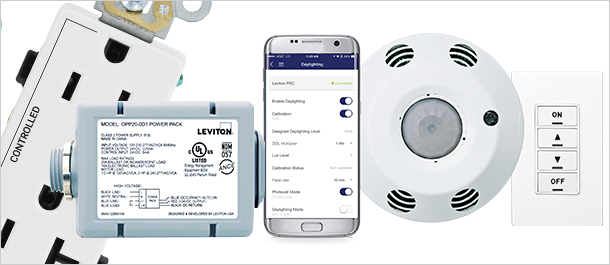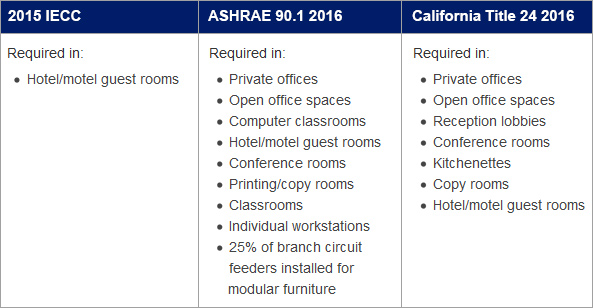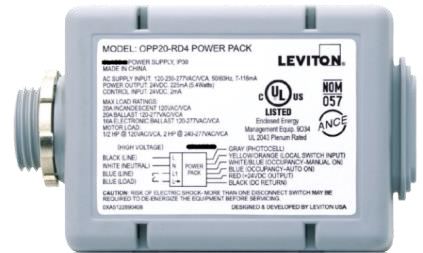The Easiest, All-in-One Device for National Electric Code (NEC) Receptacle Control Compliance

If you’re looking to meet IECC 2012/2015, ASHRAE 90.1 2013/2016 or Title 24 2016 commercial energy control requirements, you’ll need to familiarize yourself with receptacle control. All the big three energy standards require controlled receptacles, which respond to control signals (such as occupancy sensors or building schedulers) and keep non-essential electrical loads (small appliances, phone chargers) switched off when spaces are vacant or closed.
When you factor in new National Electric Code (NEC) requirements for Class 1 and Class 2 wiring devices, simple plug load control can quickly become more complicated. Fortunately, we’re here to break down the requirements and meet them all with the simplest solution possible.
When do I need receptacle control?
That largely depends on what your application is and where the facility is located.

What does the NEC say about receptacle control?
While the NEC does not directly address receptacle control, it does regulate Class 1 and Class 2 wiring devices. Receptacle control usually requires a power pack, which is typically a Class 2 device.
Class 1 Circuits are divided by the NEC into two types:
- Power-limited and remote-control
- Limited to 30V and 1000VA
- Remote Control and Signaling circuits
- Limited to 600V, but limitations on the power output of the source
Class 2 circuits have power limitations for the power sources:
- One for AC current
- One for DC current
- In general, a Class 2 circuit (operating at 24V with a power supply durably marked “Class 2” and not exceeding 100VA) is the type most commonly used
- Class 2 circuits are commonly considered Low Voltage, however they can be as high as 150V per NEC 2017
What do I need to do to meet code and install a controlled receptacle with a power pack?
Although many power packs, including the Leviton OPP20 power pack, are Class 2 devices, they can achieve compliance and be reclassified as Class 1 by following these simple steps:
- Eliminate the Class 2 markings. This can be done by simply crossing out the designation on the label, as we’ve done below.

- Install the entire circuit using wiring methods and materials in accordance with Part II Class 1 circuits.
For more information, see our technical White Paper on PRC and NEC Compliance.
Easy Plug Load Control with PRC and Power Packs
We keep compliance simple with the Provolt 0-10V Dimming Room Controller (PRC), which offers all the dimming control you’ll need to meet IECC, ASHRAE 90.1 and Title 24. This solution is perfect for standalone applications like classrooms, conference rooms and small retail stores.
- Full-range LED dimming control for 0-10V fixtures
- Integrated photocell and occupancy sensor all in the unit for fast, easy installation
- Install and program from your smart device via the Provolt app in minutes—installers spend less time on a ladder!
- Connect to an OPP20 Super Duty Power Pack, the first power pack designed to control virtually any lighting or receptacle circuit load, for code compliant receptacle control that responds to PRC signals
For more information on the PRC, visit Leviton.com/provolt.


